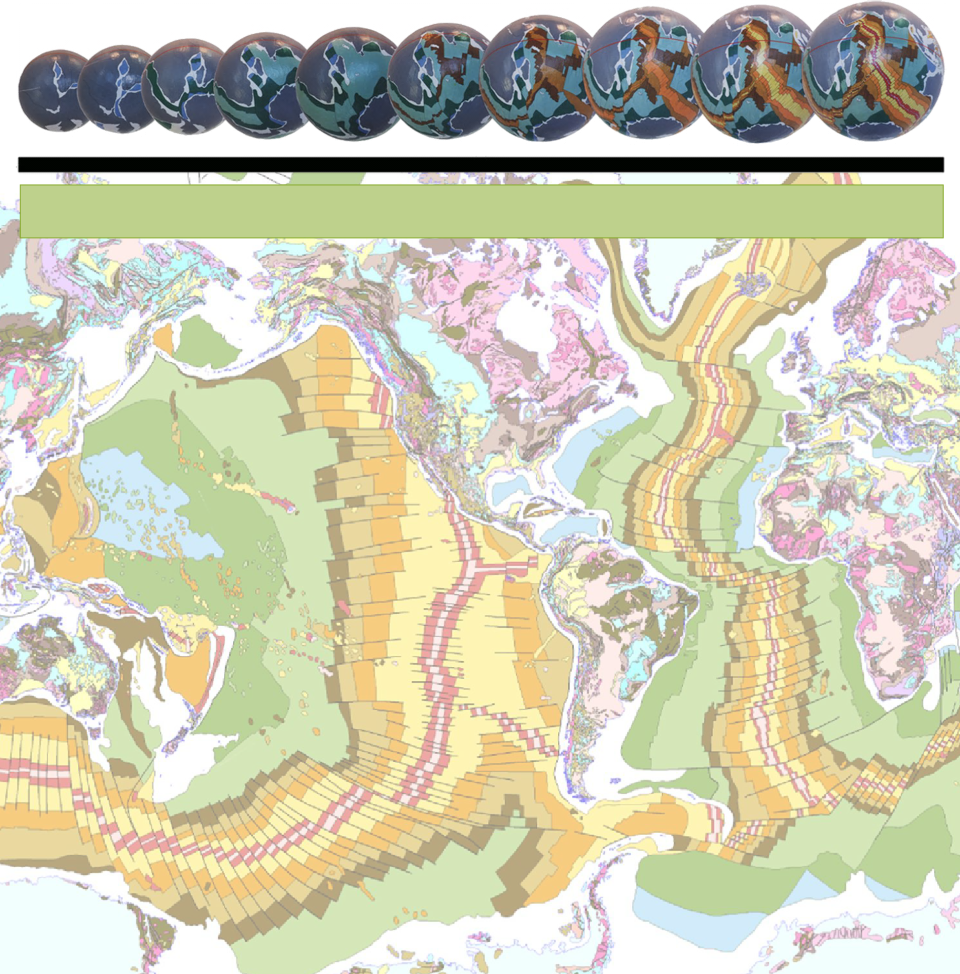

SAMUEL WARREN CAREY
In researching the concept of Continental Drift during the 1950s, Professor Carey, from the University of Tasmania, made a scale model of the present-
It is important to mention that Carey made comment that the trans-
“At an early stage in my investigations I went to some pains to ensure that I compared and transferred shapes and sizes of the continental blocks accurately. I have spent tedious years plotting large oblique stereographic projections about diverse centres not only for Africa and South America but for every piece of the Earth’s surface. I combined this with spherical tracings from the globe, working on a spherical table. The reward for this zeal for accuracy was frustration. Again and again over the years I have assembled Pangaea but could never attain a whole Pangaea. I could make satisfactory sketches like Wegener’s classic assembly, but I could never put it all together on the globe, or a rigorous projection. I could reconstruct satisfactorily any sector I might choose but never the whole. If I started from the assembly of South America…by the time I reached Indonesia there was a yawning gulf to Australia, although I felt sure from the oroclines that Indonesia and Australia belonged together...If I started from Australia and Indonesia I had no hope of closing the Arctic Sphenochasm [where the split occurred]…, which I was convinced was basically correct...I was painfully aware that there was a crucial link missing from the global synthesis. I was tempted to abandon the quantitative assembly and resort to sketches which would show every block related as I inferred they should be, even though I knew I could not bring them together that way with the rigour I sought.”
“But in the end the rigorous approach has paid off. For it has revealed a discrepancy which had not been apparent. It was not my method that was at fault, but my assumption that the earth of Pangaea was the same size as the earth of today. The assembly of Pangaea is not possible on the earth of the present radius, but on a smaller globe, a globe such as is demanded by the orocline analysis, these difficulties vanish.”